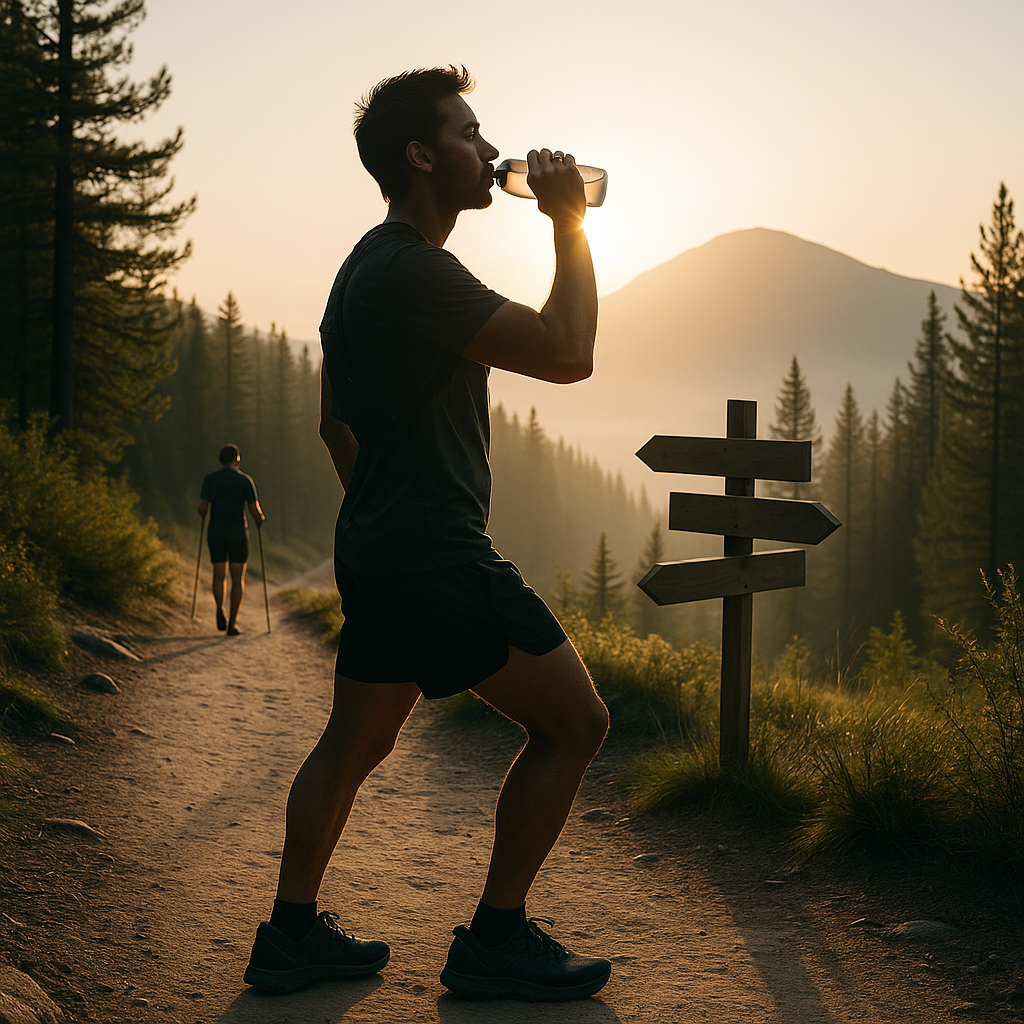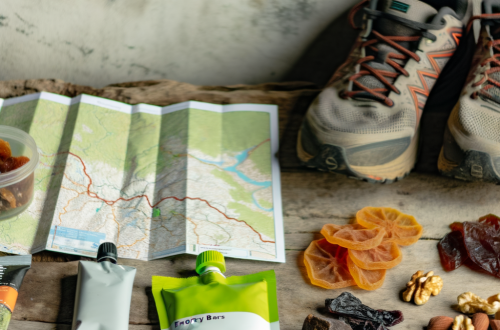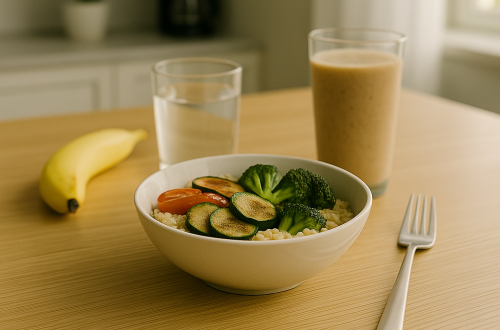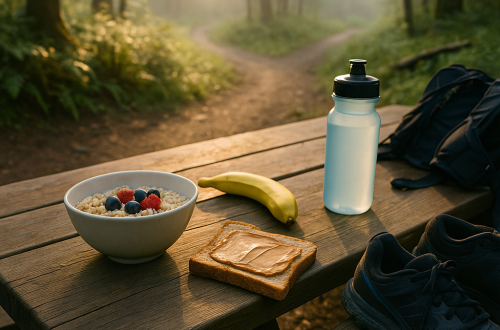
How much water should I drink during a trail run?
Why Hydration Matters on the Trail
Trail running is a full-body experience that pushes your endurance, strength, and mental grit. But one of the most overlooked aspects of trail running performance is hydration. Whether you’re tackling a 5K loop or a 30-mile ultra, staying properly hydrated is key to avoiding fatigue, cramps, and even dangerous conditions like heat exhaustion or hyponatremia.
Unlike road running, trail running often involves elevation changes, uneven terrain, and longer durations — all of which increase your body’s demand for water. So, how much water should you drink during a trail run? Let’s dive in.
How Much Water Should You Drink Per Hour?
As a general rule of thumb, most trail runners should aim to drink between 16 to 24 ounces (about 500 to 700 ml) of water per hour of running. This range helps replace the fluids lost through sweat and respiration, especially during moderate to intense efforts.
However, this is just a starting point. Your personal hydration needs may vary based on several factors, including your sweat rate, the weather, altitude, and the intensity of your run.
Factors That Affect Your Hydration Needs
- Weather Conditions: Hot and humid environments increase sweat loss, requiring more frequent hydration.
- Elevation Gain: Higher altitudes can dehydrate you faster due to drier air and increased respiration.
- Duration and Intensity: The longer and harder you run, the more water your body will need to stay balanced.
- Body Size and Sweat Rate: Larger runners or those who sweat heavily will need more water than smaller or less sweaty individuals.
- Trail Terrain: Technical trails that require more effort can increase your fluid loss.
To get a more accurate idea of your needs, consider doing a sweat test: weigh yourself before and after a run (without drinking or eating during), and the weight lost is mostly water. This can help you fine-tune your hydration plan.
Electrolytes vs. Water: What’s Best?
While water is essential, it’s not the whole story. When you sweat, you also lose electrolytes — especially sodium — which are crucial for muscle function and fluid balance. Drinking only water for long periods can dilute your blood sodium levels, leading to hyponatremia.
For trail runs longer than an hour, or in hot conditions, it’s smart to supplement with electrolytes. You can do this through:
- Electrolyte drink mixes or tablets
- Sports drinks with balanced sodium and potassium
- Salt capsules or chews
Experiment with different products during training to find what works best for your stomach and performance.
How to Carry Water on a Trail Run
Carrying water efficiently is a key part of your trail running setup. Here are some popular hydration options:
- Handheld Bottles: Great for short to medium runs. Easy to access but limited capacity.
- Hydration Vests: Ideal for longer runs. They distribute weight evenly and can carry flasks, bladders, and gear.
- Hydration Belts: A lightweight option for mid-distance runs, often with space for small bottles and snacks.
- Soft Flasks: Collapsible and easy to stash once empty. Many vests are designed to hold these in front pockets.
Choose the method that matches your distance, terrain, and personal comfort. Always test your gear before race day.
Signs of Dehydration Every Runner Should Know
Even with the best intentions, it’s possible to fall behind on hydration. Here are some warning signs to watch for:
- Dry mouth or extreme thirst
- Dizziness or lightheadedness
- Dark yellow urine or infrequent urination
- Fatigue or sluggishness
- Muscle cramps
- Headache or confusion
If you notice these symptoms, slow down, find shade if possible, and sip water gradually. Don’t chug large amounts at once — your body absorbs fluids better in small, steady sips.
Tips for Staying Hydrated Before, During, and After Your Run
Hydration isn’t just about what you drink on the trail — it starts before you even lace up your shoes.
- Before: Drink 16–20 oz of water 2–3 hours before your run. Sip another 8 oz about 30 minutes before hitting the trail.
- During: Sip 4–6 oz every 15–20 minutes. Adjust based on heat and effort.
- After: Rehydrate with water and electrolytes. A recovery drink with carbs and sodium can help replenish what you lost.
Also, pay attention to your urine color post-run — pale yellow is a good sign of proper hydration.
Hydration Strategies for Long vs. Short Trail Runs
Short Runs (Under 1 Hour): You may not need to carry water if you’re well-hydrated beforehand and conditions are mild. But in hot weather, even short runs can require a small bottle or flask.
Medium Runs (1–3 Hours): Bring at least 16–32 oz of water. Consider adding electrolytes, especially if you’re sweating heavily.
Long Runs (Over 3 Hours): Plan a full hydration strategy. Use a vest or belt with multiple bottles or a bladder. Refill at water sources if available, and bring electrolyte supplements or salty snacks.
Common Mistakes Runners Make with Hydration
- Waiting Until You’re Thirsty: Thirst is a late indicator. Drink proactively.
- Overhydrating: Drinking too much water without electrolytes can be dangerous. Balance is key.
- Not Practicing Hydration: Test your hydration plan during training, not on race day.
- Ignoring Weather Changes: Hydration needs can change drastically with temperature and humidity.
- Using New Products on Race Day: Always test electrolyte mixes and gear ahead of time to avoid surprises.
Final Thoughts: Listen to Your Body
Hydration is personal. While general guidelines are helpful, the best approach is to listen to your body, practice during training, and adjust based on conditions. Trail running is about connection — with nature, your body, and your limits. Staying hydrated helps you enjoy the journey, stay safe, and perform your best.
So next time you hit the trail, bring your water, sip smart, and run strong.
Powered by: aiContent.live





